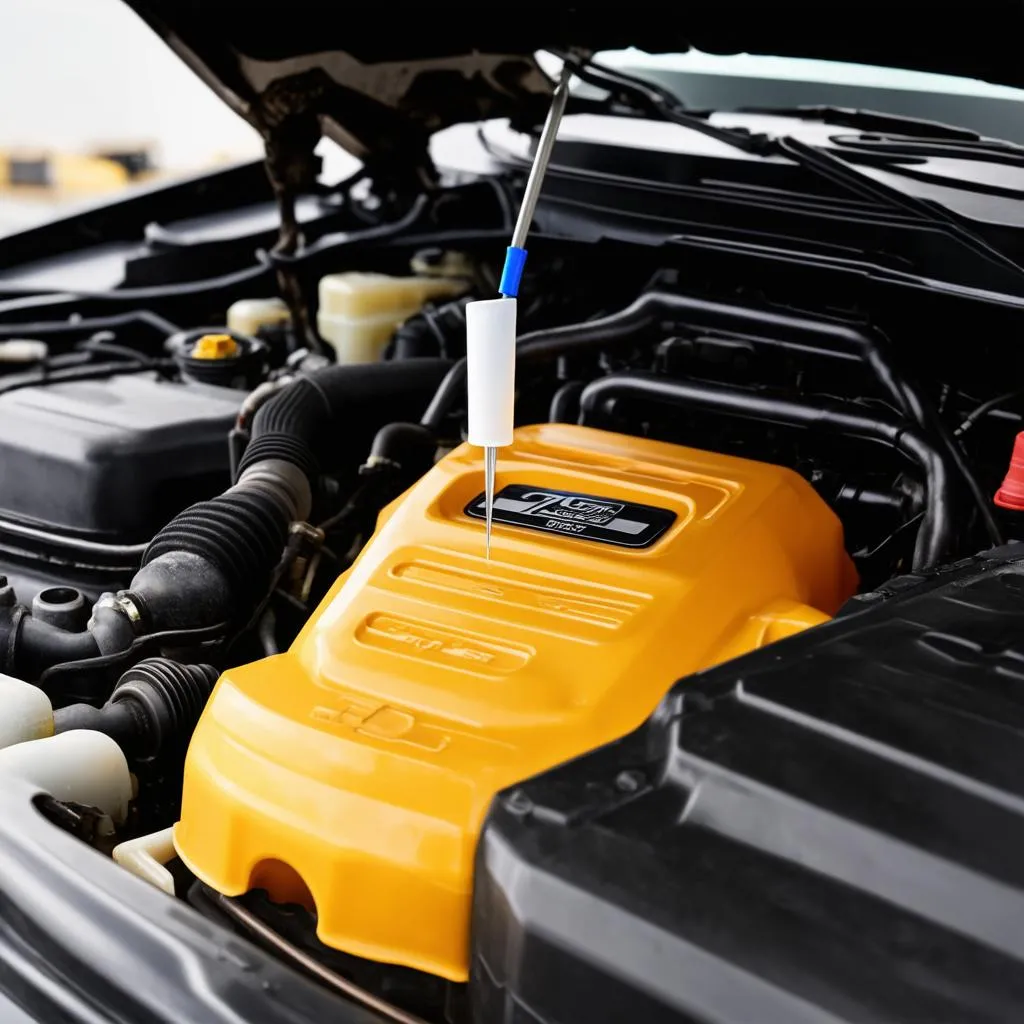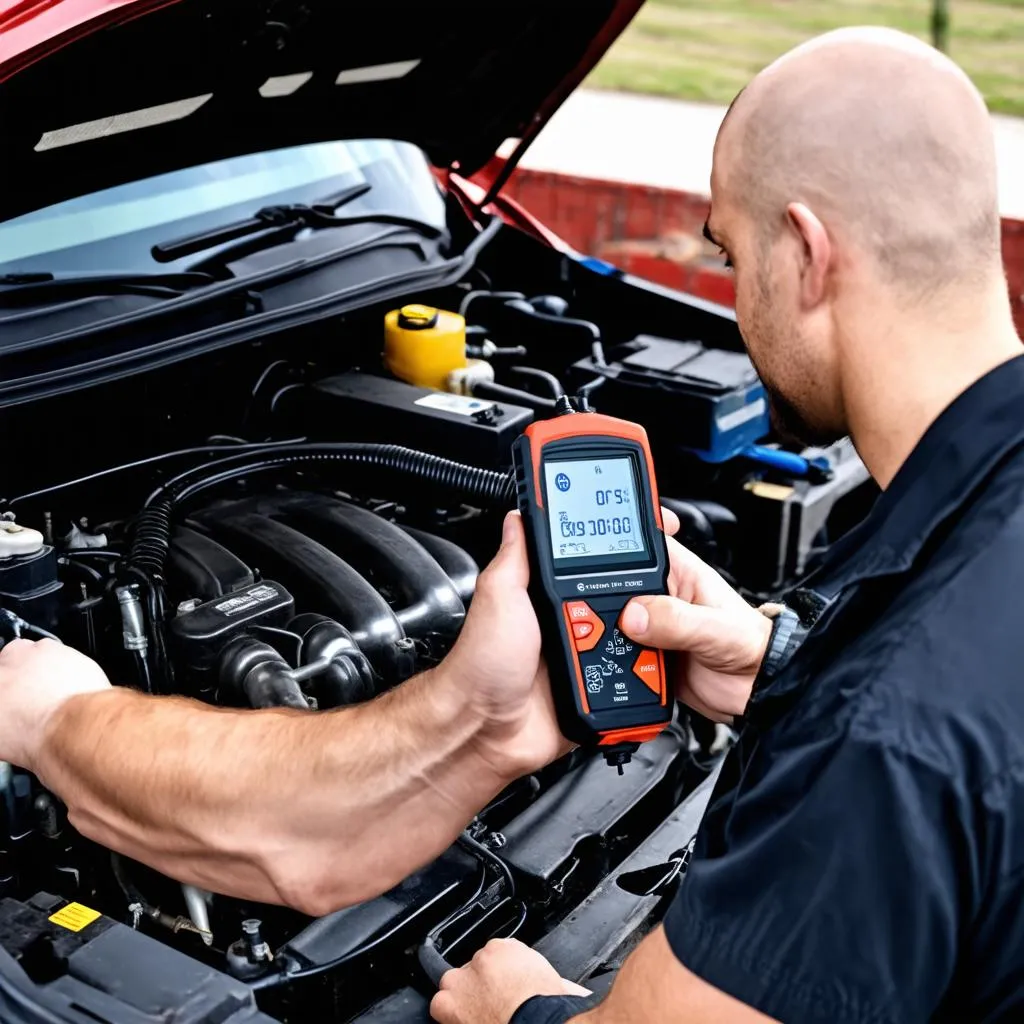You’re cruising down the highway, the sun is shining, and your favorite song is on the radio. Life is good. But then, you glance at your dashboard and notice the “check engine” light is on. A shiver runs down your spine. Is it something serious? Could it be overheating? If only there was a way to know your engine’s vitals without taking it to a mechanic…
Enter the OBD reader, a handy device that can unlock a treasure trove of information about your car’s inner workings. But can it tell you everything? Specifically, can a 7.3 OBD reader tell you your oil temperature? Let’s dive in and find out!
Understanding the Question: Oil Temperature and Your 7.3L Engine
For those unfamiliar, the 7.3L Powerstroke engine, a diesel workhorse renowned for its power and reliability, has a dedicated following. Whether you’re hauling heavy loads or just enjoy the rumble of a powerful engine, keeping an eye on your oil temperature is crucial for its longevity.
Why is oil temperature so important? Well, just like our bodies, engines need to maintain a certain temperature range for optimal performance. Oil that’s too cold can’t lubricate properly, leading to increased wear and tear. Conversely, excessively hot oil can break down and lose its effectiveness, potentially causing catastrophic engine damage.
Many 7.3L owners, especially those who tow heavy loads or frequently drive in demanding conditions, are naturally curious about monitoring their oil temperature in real-time. Hence, the question arises: can a standard OBD reader provide this vital information?
The Truth About OBD Readers and Oil Temperature
The answer, unfortunately, isn’t a simple yes or no. While OBD readers are incredibly useful for diagnosing engine issues and accessing various parameters, their ability to read oil temperature directly depends on several factors:
1. Vehicle Year and Model:
OBD (On-Board Diagnostics) standards have evolved over the years. Older vehicles, particularly those manufactured before OBD-II became mandatory in 1996, might not have the necessary sensors or data transmission protocols to display oil temperature through a standard OBD reader.
2. Sensor Availability:
Not all vehicles, even those equipped with OBD-II, come standard with an oil temperature sensor connected to the ECU (Engine Control Unit). Some manufacturers may consider it an optional extra or omit it altogether to save costs.
3. OBD Reader Capabilities:
Even if your 7.3L engine has an oil temperature sensor, not all OBD readers are created equal. Basic, generic readers might only display standard parameters like engine RPM, coolant temperature, and error codes. More advanced, professional-grade scanners, on the other hand, often boast a broader range of data access, potentially including oil temperature.
Expert Insight: “The availability of specific parameters through an OBD reader is highly dependent on the manufacturer’s choices during the vehicle’s design phase,” says automotive diagnostics expert Dr. Emily Carter, author of “The Complete Guide to Automotive Diagnostics.” “While some manufacturers prioritize comprehensive data access, others may opt for a more streamlined approach, focusing on essential parameters.”
So, What are Your Options?
If you’re dead set on monitoring your 7.3L’s oil temperature, don’t despair! You still have several options:
-
Consult Your Owner’s Manual: The first step is to check your vehicle’s owner’s manual. It might list the specific parameters accessible through the OBD port and whether oil temperature is one of them.
-
Invest in an Advanced Scanner: Consider purchasing a higher-end, professional-grade OBD scanner. These scanners are designed for mechanics and serious car enthusiasts, offering a wider range of data access and diagnostic capabilities.
-
Install an Aftermarket Oil Temperature Gauge: For the most accurate and reliable readings, installing a dedicated aftermarket oil temperature gauge is the way to go. This involves tapping into your engine’s oil system and might require professional installation.
Beyond the Technical: A Holistic Approach to Engine Care
While technology like OBD readers can be incredibly valuable, it’s important to remember that they are just tools. Taking a holistic approach to engine care, including regular maintenance, using high-quality fluids, and paying attention to unusual sounds or smells, remains crucial.
In many spiritual traditions, maintaining a machine is seen as an act of respect and gratitude for its service. Just as we care for our own bodies, tending to our vehicles with diligence and attention can foster a sense of harmony and appreciation.
 7.3L Powerstroke engine oil
7.3L Powerstroke engine oil
FAQs About 7.3L OBD Readers and Oil Temperature
Here are some common questions we receive about this topic:
Q: Can I use any OBD reader for my 7.3L engine?
A: While most standard OBD readers can connect to your 7.3L’s OBD port, their ability to read oil temperature specifically will vary depending on the factors mentioned earlier.
Q: Is monitoring oil temperature really that important?
A: Absolutely! Oil temperature is a crucial indicator of your engine’s health. Maintaining it within the optimal range ensures proper lubrication, prevents premature wear, and helps avoid potentially catastrophic engine damage.
Q: What are some signs of oil temperature problems?
A: Keep an eye out for:
- The oil pressure gauge fluctuating significantly
- Unusual knocking or ticking sounds coming from the engine
- A burning oil smell
 Mechanic using an OBD scanner
Mechanic using an OBD scanner
Exploring Further: More Resources on techcarusa.com
Looking for more information on OBD readers, engine diagnostics, or 7.3L maintenance? Check out these related articles:
- Choosing the Right OBD Reader for Your Needs
- Understanding Your Engine’s Warning Lights
- 7.3L Powerstroke Maintenance Tips
Need Expert Help? We’re Just a Message Away!
Still, have questions about your 7.3L or need help finding the right diagnostic tools? Our team of automotive experts is here to assist you. Contact us on WhatsApp at +84767531508 for 24/7 support and guidance.
Keeping Your 7.3L Running Smoothly
Ultimately, whether you rely on technology, intuition, or a combination of both, the key to a long and healthy engine life lies in proactive care and attention. By staying informed, utilizing the right tools, and listening to your vehicle, you can ensure your 7.3L continues to roar for years to come.